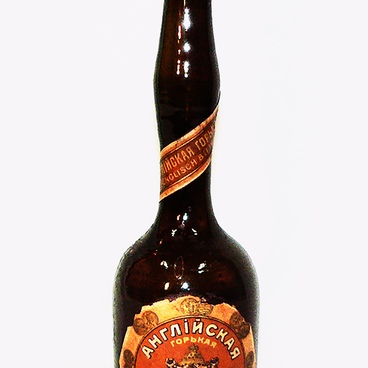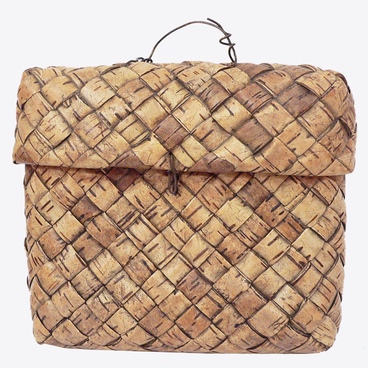The collection of the Museum contains this bookcase from the 1930s-1940s, consisting of two components: an upper and a lower cabinet. The upper cabinet is wooden, shallow, and double-leafed. It has two glazed doors that are locked with a metal key, and the glass is decorated with wooden slats. Inside the cabinet there are two thin shelves and a small metal hook with a loop so that the door can be locked more tightly from the inside. The lower cabinet has two drawers at the top and two wooden doors at the bottom. The doors and drawers are adorned with decorative wooden slats, and they also have keyholes. There is only one shelf inside the lower cabinet.
Something as familiar as a bookcase has a long history. Although its design is now more proper, its surfacing is smooth, and its doors are glazed and lockable, this was not always the case. Archaeological excavations in different parts of the world have given us the opportunity to see what an ancient bookcase was like: a rough box hewn out of a log. Later, this box received a lid — what would become a future door.
In the traditional Russian hut, items were stacked rather than placed in cabinets, using boxes, chests, and other storage. Later, chests were arranged vertically, with the lid serving as a door. Inside, one on top of the other, small chests without lids were placed — turning into a cabinet with shelves. True, there might not have been any books in it at all. A rare example of a medieval cabinet, which has survived since the 13th century, is rough and resembles a watchman’s booth. This was still more convenient than chests upon chests. The cabinet is currently housed in the Museum of Decorative Arts in Paris. In the 16th century, separate cabinets began to appear for storing items, whereas objects where there was no concern of breakage were put into chests. The cabinet acquired its classic shape in the modern era, when bookcases with glass doors began to be produced in England.
Until the early 1960s, what is now called “mass-produced furniture” did not exist in the USSR, where standard cabinets, tables, shelves, and so on were cut from chipboard. In those years, small industries and crews of craftsmen were engaged in the creation of household furniture. Furniture was most often made from inexpensive solid wood, for example, glued board made of pine, or else from ordinary, veneered, or boarded plywood. This cabinet in the Kótlas Museum of Local Lore’s exhibition was created in a similar way.
Something as familiar as a bookcase has a long history. Although its design is now more proper, its surfacing is smooth, and its doors are glazed and lockable, this was not always the case. Archaeological excavations in different parts of the world have given us the opportunity to see what an ancient bookcase was like: a rough box hewn out of a log. Later, this box received a lid — what would become a future door.
In the traditional Russian hut, items were stacked rather than placed in cabinets, using boxes, chests, and other storage. Later, chests were arranged vertically, with the lid serving as a door. Inside, one on top of the other, small chests without lids were placed — turning into a cabinet with shelves. True, there might not have been any books in it at all. A rare example of a medieval cabinet, which has survived since the 13th century, is rough and resembles a watchman’s booth. This was still more convenient than chests upon chests. The cabinet is currently housed in the Museum of Decorative Arts in Paris. In the 16th century, separate cabinets began to appear for storing items, whereas objects where there was no concern of breakage were put into chests. The cabinet acquired its classic shape in the modern era, when bookcases with glass doors began to be produced in England.
Until the early 1960s, what is now called “mass-produced furniture” did not exist in the USSR, where standard cabinets, tables, shelves, and so on were cut from chipboard. In those years, small industries and crews of craftsmen were engaged in the creation of household furniture. Furniture was most often made from inexpensive solid wood, for example, glued board made of pine, or else from ordinary, veneered, or boarded plywood. This cabinet in the Kótlas Museum of Local Lore’s exhibition was created in a similar way.



